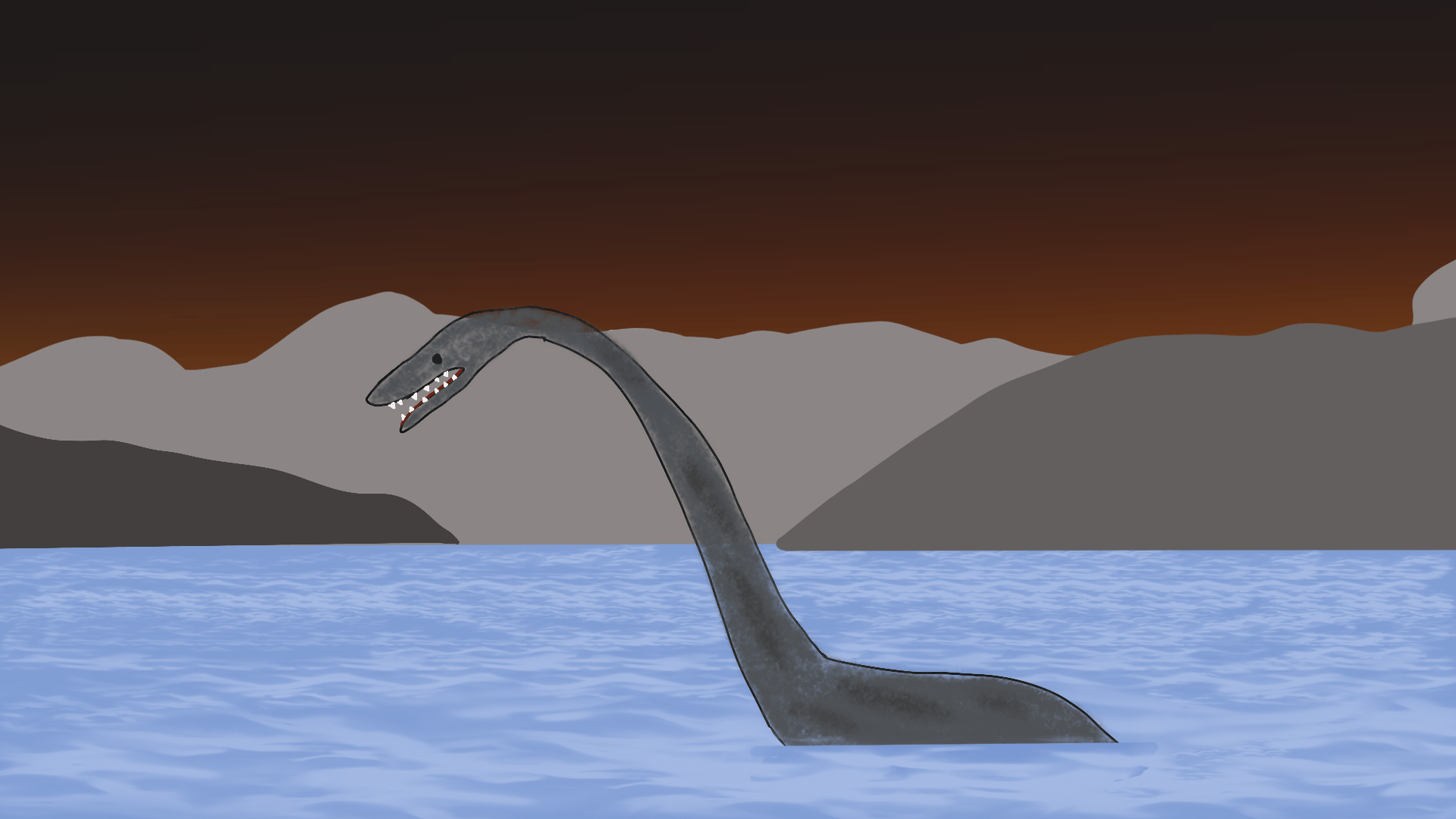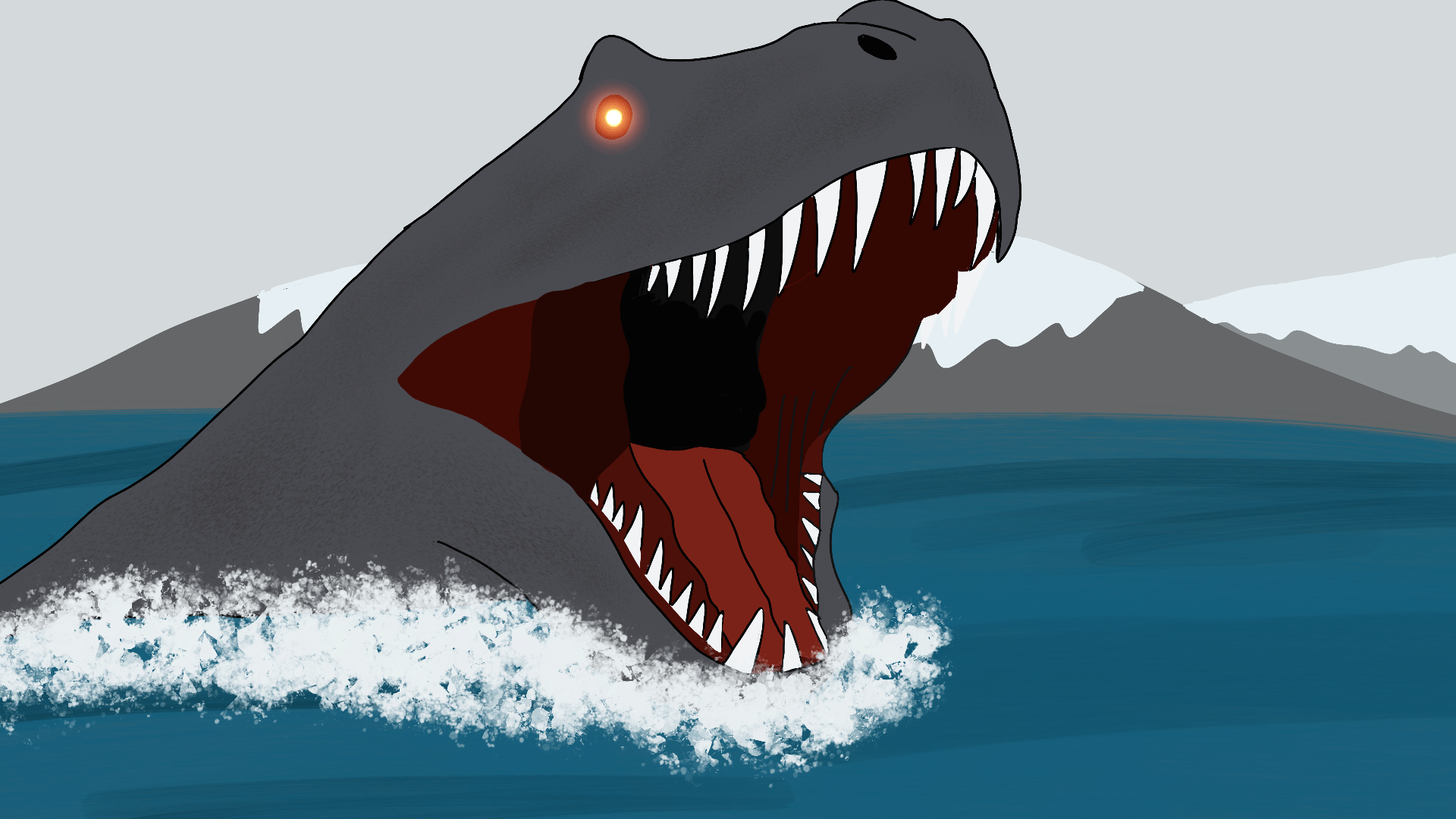The Lake Districts of Chile and Argentina stretch across the Andes in northern Patagonia. On the Argentina side, The Nahuel Huapi Lake is a glacial lake renowned for its crystal clear, pristine waters and jaw dropping views. The lake is almost entirely surrounded by the towering Andes Mountajns and has become quite a hotspot for outdoor enthusiasts. Still, it’s important to remember the lake itself has around 200 square miles of surface area and goes to a depth of 1400 feet.
Inside this lake, one of the most well-known cryptids in Argentina resides, a large mysterious water creature known as Nahuelito.
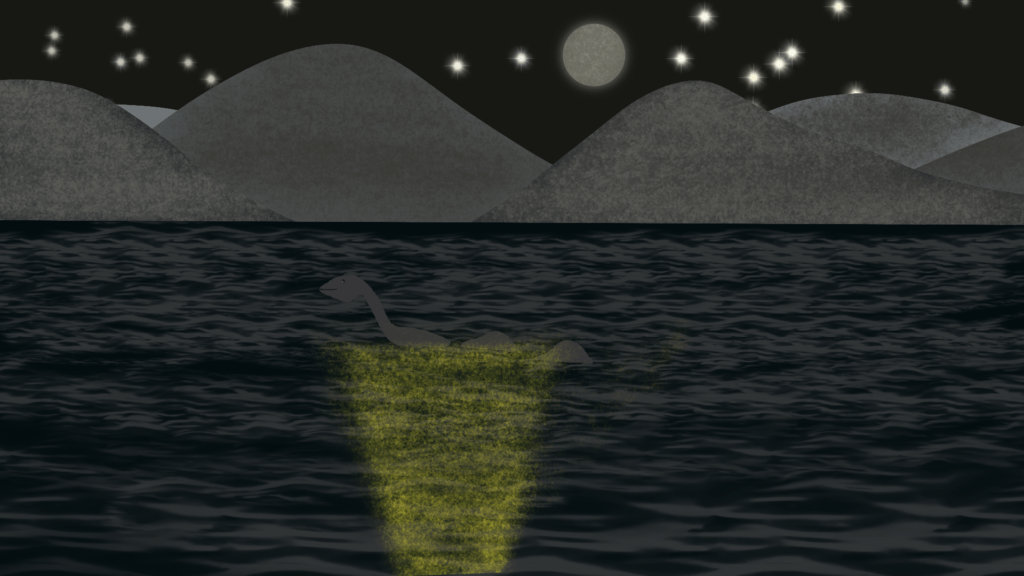
Nahuelito is said to be some type of water serpent or possibly a living plesiosaur. Described as being similar to the Loch Ness Monster or Canada’s Ogopogo, Nahuelito is said to be 10-15 meters long, with two hunches, leathery skin and, sometimes, a swan-like neck.
Although native tribes told stories about the creature for centuries, Nahuelito wasn’t first searched for or documented until the early 20th century.
Perhaps the most well-known documented sighting is that of George Garrett. In 1910, Garret was the manager of a company that sailed around the Nahuel Huapi Lake.
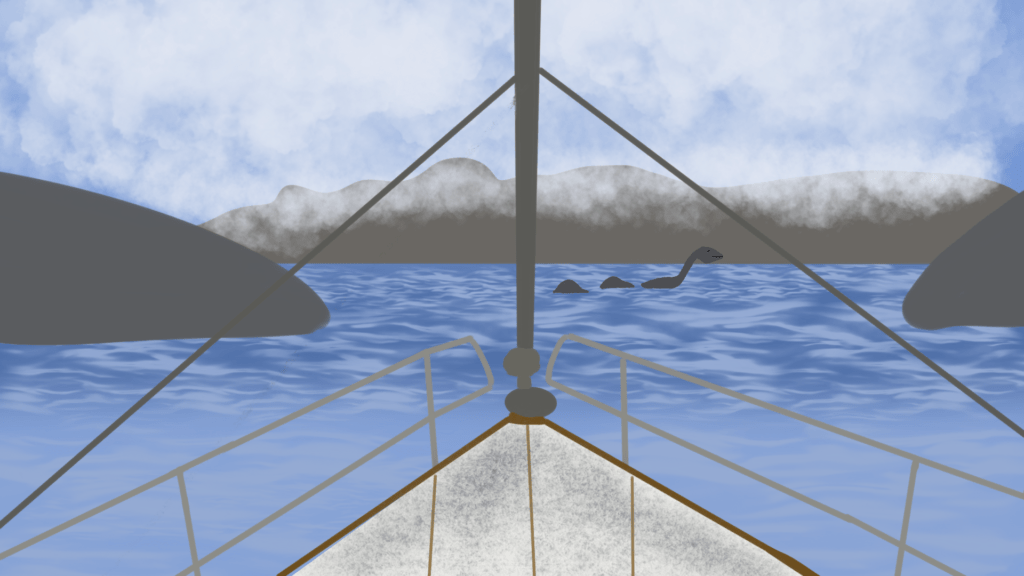
During the year 1922, as searching for large unknown creatures became quite popular, he wrote to the Toronto press about what he witnessed. He recalled One day he saw an animal that, according to his testimony that, “seemed to have a 15-to-20-foot diameter, projected perhaps 6 feet over the water and remained in sight for 15 minutes.”
The Press ran with the story, but the next story is what perhaps made this cryptid so popular.
American gold miner Martin Sheffield, settled in Patagonia in 1880, and in 1922, he wrote to Buenos Aires Zoo director Clemente Onelli about a “long-neck, swan-headed creature” that dwelled in a lagoon near Epuyén. Epuyen was a village about 90 miles south of Bariloche. Sheffield described in his letter how he had seen crushed bushes and large footprints leading down to the water. When he looked at the water, he saw the long head and neck of the creature out in front of him. Director Onelli had been receiving quite a number of reports of the monster in the region, but now with Sheffield’s letter he had the ammo to fund and organize a search.
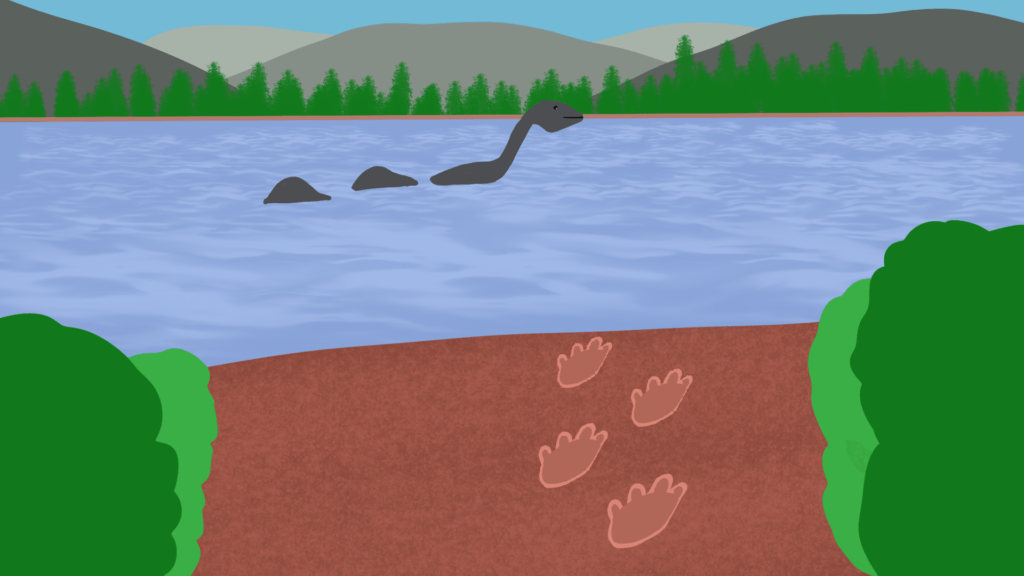
The search attracted quite a bit of attention as Sheffield was a renowned former sheriff and had come to the area following the trail of the famous bandits Butch Cassidy and the Sundance Kid who had fled to Argentina. Onelli would enlist José Chiagi, the superintendent of the Buenos Aires to organize and lead the expedition to Epuyén Lake, as well as the other major lakes in Patagonia, including Nahuel Huapi.
After the search yielded no results, the searches for Nahuelito would continue and perhaps more importantly, there were many more sightings up until modern day.
The epicenter of sightings though for Nahuelito is said to be most prominent from the shores of San Carlos de Bariloche. There the beast is said to have been spotted countless times.
So many sightings have happened in fact that a poll conducted in the town recently showed 50% of the population believe Nahuelito was real.
One of the more interesting stories surrounding this cryptid is said to have occurred in 1960. In February, the Argentine navy chased an “unidentified undersea object” for 18 days around the massive lakes in Patagonia. They never found the strange underwater object, but the story grew international attention appearing in magazines such as Newsweek.
An article in the New York Post by William R. Rudy on February 17, 1960, was titled “The Monster Rally Down Argentine Way,”
It theorizes that perhaps the Lochness monster may have swum from Northern Scotland to Patagonia. While somewhat farfetched, the article highlights how historically cryptids used to garner mainstream media attention instead of the cold shoulder.
Still, there’s a number of theories as to what the Argentine Navy was following during that time. One is that this was a foreign submarine that had come into the territory. To date, no country has admitted this was them. Some believe this could have been a Nazi submarine. It’s well documented many Nazis fled to Argentina after WW2. Some even say Hitler himself, who some believe didn’t commit suicide, came to Argentina. In fact, there is speculation he had a home right on the coast of Nahuel Huapi Lake.
(Read about the Walgren Lake Monster here)
Another theory concerns that this unknown object was a large known animal, for example a whale that had swam in from the seas. Although swimming in freshwater can be quite hazardous for a whale’s health, whales can survive for short periods in freshwater. An example of this would be Humpfrey the whale.
In 1985 Humfrey, a humpback whale, accidentally swam into the San Francisco Bay and up the Sacramento River, which was freshwater. After swimming up it around 70 miles, he eventually became trapped and had to be lured back out.
During this time, which was several weeks, he became very week, but eventually, he headed back down the Sacramento River where salinity increased, and he made into the SF bay and eventually out to the ocean.
Was this mystery object Nahuelito? Or another undiscovered creature lurking in these lakes? There was certainly speculation this is what the Navy was tracking.
In 1988, there were photos of an alleged Nahuelito published in a magazine of the Río Negro newspaper. They were taken at a short distance with an analog camera. the object was near the coast of Bariloche. The man who took them said “It is not a log of whimsical shapes. It is not a wave. El Nahuelito showed his face”. The man left these words along with the photos in a letter to the magazine.
While many modern-day sightings have occurred, it’s important to remember the sightings have happened for centuries.
The Tehuelche people, who have lived in the Patagonia wilds for thousands of years, tell stories of a huge creature spotted swimming beneath the surface of the Nahuel Huapi Lake. Known to them as El Cuero, the monster was said to resemble a giant stingray with a sucker-like mouth that it used to eat its unsuspecting victims. Parents in the tribe would warn their children to stay away from the beaches or else El Cuero might drag them beneath the waves.
The Patagonia area in general is known historically as having large monsters. In the 16th century, Portuguese explorers claimed they spotted monsters roaming on Patagonia’s beech and in cypress trees. They swore they saw “giant men” and named the region Pata-gão, or, in Portuguese, “big foot.” These early settlers also caught glimpses of monsters swimming beneath the waves of the region’s many lakes.
With so many sightings and history was Nahuelito a real creature or just a legend that ran out of control? If it does exist, what is it? There are several theories on that.
The first is that it is a prehistoric animal that survived. While this theory seems the most logical at first, there are several questions regarding this. First, plesiosaurs are said to have gone extinct around 66 million years ago.
(What is the Irish Crocodile?)
The Nahuel Huapi Lake and surrounding lakes, which are glacial lakes, formed after the last ice age some 14,000 years ago. This leaves quite a gap between when the lakes formed and the time, they went extinct. However, it could be the case they swam in from the ocean and just decided to reside in the cool waters. One other thing to note is the creature could be amphibious, or able to breathe out of water. Martin Sheffield’s sighting did say the creature left tracks on the shore.
A second theory concerning the animal is that it is a new species. Perhaps one that traveled in from the ocean and stayed in the remote areas of the lake and away from the tourist commotion.
The final theory states that this creature doesn’t exist or perhaps did at one point but not anymore. It is easy to confuse things in the water and it’s not uncommon for people to overestimate size of things they see in the water. The story did appear to explode the cryptids popularity once the 1922 search ensued.
To date, sightings of the creature continue but until some documentation is recorded, Nahuelito, unfortunately will continue to be considered a myth.
